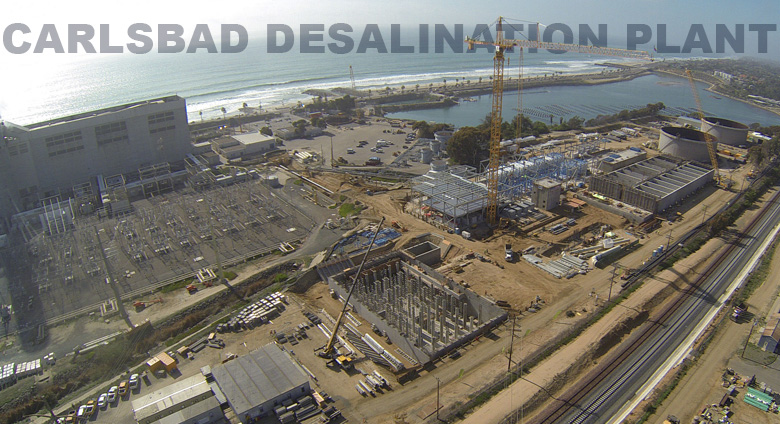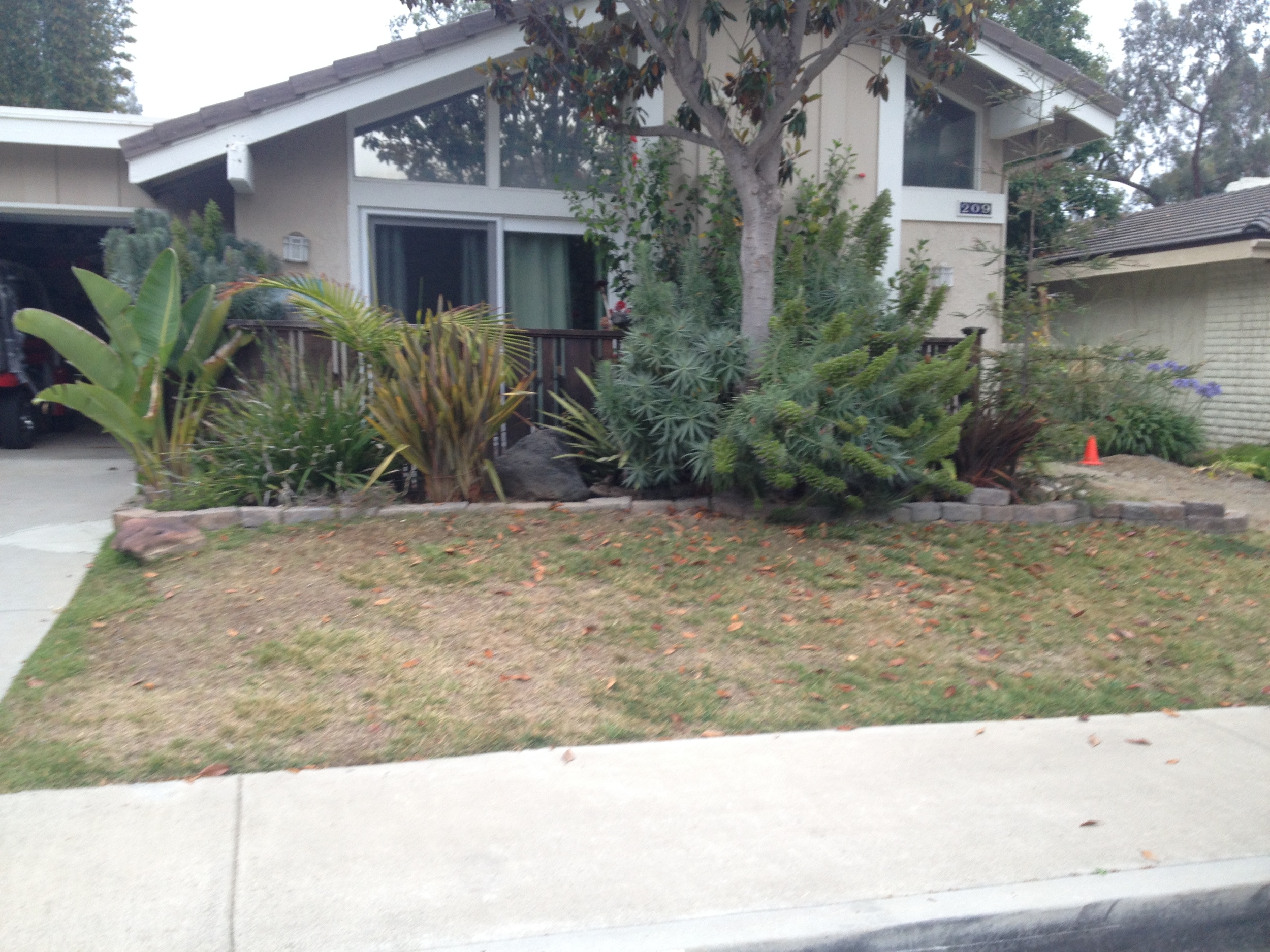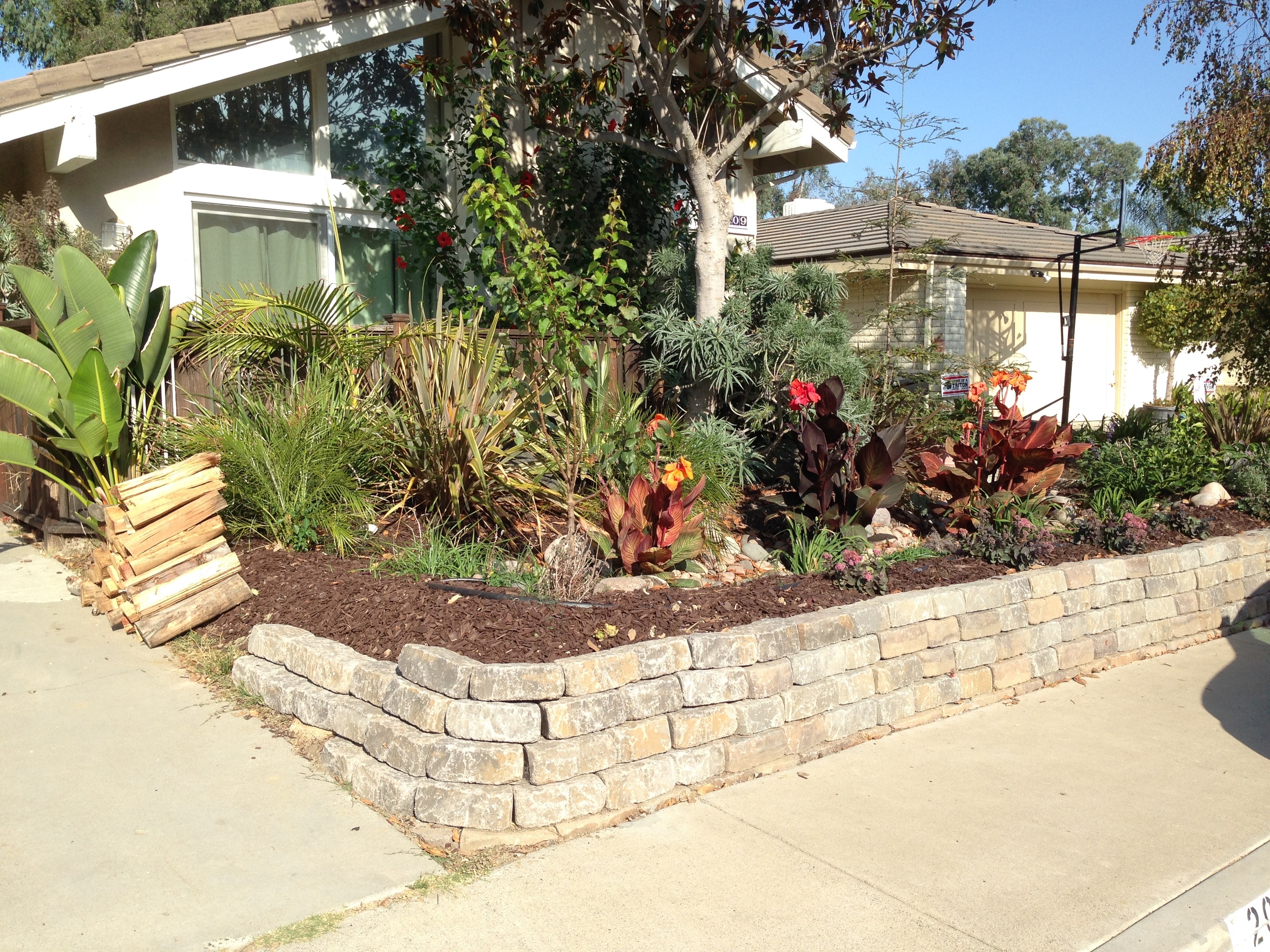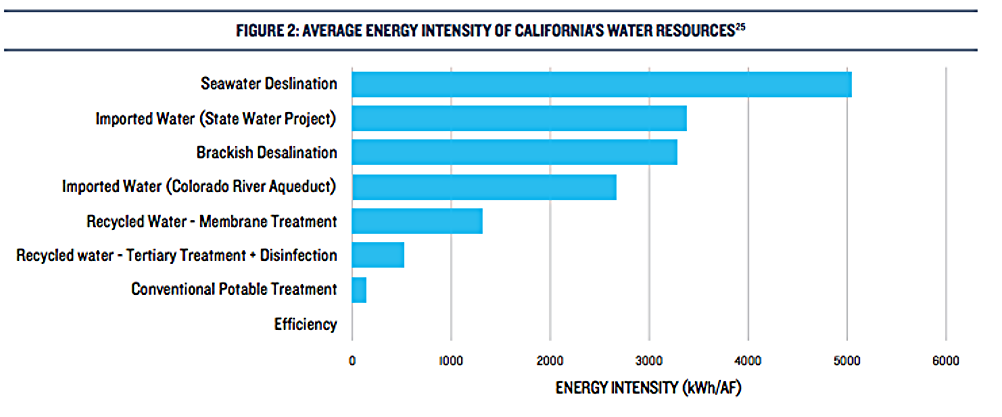
Desalination, for many, seems to be a long awaited salvation. The reality is that desalination is the most expensive, most energy intensive water source we have in San Diego. Those of us already conserving are subsidizing this expensive water so that homeowners who want green lawns and high water use landscapes can continue to do so.
The Poisodon Desalination plant in Carlsbad is designed to produce ONLY 7% of water needs for the San Diego Region. Keep that number in mind.

500 square feet of lawn uses 13,000 gallons of water per year.
In San Diego, it is estimated that 55% of our water use is Residential. That’s YOU and I in our homes. Of that 55% of the water that is used in San Diego, we use 65-75% on our LANDSCAPE! This means we pipe 80% of our water into San Diego from the Colorado River and from Northern California so we can unsustainably keep lawns and other inappropriate landscape plantings.
Knowing this, we realize that we can arm OURSELVES with tools to more efficiently allocate our water use. We can be empowered to employ a series of integrated strategies to reduce landscape irrigation by HALF. The impact on our regional water supply would be a 20% reduction in water use! In our own backyards and front yards we can use laundry greywater, onsite rainwater resources, and smarter landscape designs to accommodate onsite water and an ethic of place to redesign our landscapes.

After a simple transformation, laundry greywater, and storm water from a nearby downspout provide enough water to keep fruit trees, lavender, tropical plantings, and other herbaceous plantings alive and thriving year round with no additional municiple water draw.
“Transportation and treatment of water, treatment and disposal of wastewater, and the energy used to heat and consume water account for nearly 20 percent of the total electricity and 30 percent of non-power plant related natural gas consumed in California.”
Energy is an often hidden cost that we don’t realize is dramatically entwined with our water use in California. Sometimes known as Watergy, sometimes known as the Water-Energy Nexus, the use of energy in California’s Water “Cycle of Insanity” has direct impact on Climate Change. We use an incredible amount of energy to transport and clean water around the state.

Each step in our urban water cycle requires energy intensive processes. Especially in San Diego where 80% of our water resources are imported. In the case of the water we get from the State Water Project, water is pumped over 2000 feet over the Tehachapi Pass
By reducing our overall water use, the amount of energy used in each of the steps along the way is reduced. By removing ourselves from large-scale, energy intensive municipal solutions for each of these steps, we can further reduce our carbon footprint. For example, by rerouting your laundry greywater out to your plants in your yard, not only are you reducing the water you need to water your plants and therefore reducing the energy needed to source, treat, and distribute the water for your plants, but you are also reducing the amount the amount of energy for the end use of this water and wastewater treatment.

Knowing that End-Use is the greatest energy use in the water use pie, we can feel empowered to know that the steps we take to detach from municipal water/energy streams, the more energy/water is saved!
By reducing our landscape water needs by half we can conserve 20% of our regions water supply, thus negating the current need for the energy inefficient Desalination plant. One day, it would be nice to meet ALL of our water needs with local water, while keeping our local ecosystems in tact. When the day comes where draining ecosystems hundreds of miles away is no longer an option for us, having a desalination plant to create drinking water will be essential. But as it currently stands, it’s an expensive, energy intensive, wasteful, ecologically destructive alternative to engendering a conservation ethic and a moral compass for all of us to claim personal responsibility as part of the local water cycle.

From an NRDC report: Proceed with Caution II: California’s Droughts and Desalination in Context. Note desalination uses even more energy than importing water from hundreds of miles away and pumping it over the Tahachapi pass
The NRDC has provided a series of reports outlining the current and future impact of Climate Change on our global water resources. Between water quality, flooding, evaporation rates, and more, we need to take action now to protect our dwindling fresh water supplies. The recommendation is for municipalities to take heed and begin to restructure water supply philosophy to employ a conservation ethic. Don’t wait for your local water supply district to implement restrictions, incentives, etc. Start now! Change begins with each of us!
“Reducing the emissions that cause climate change is a critical step we must take, but water resource managers and elected officials must act now to adapt to the effects of the warming that have already occurred or are unavoidable.”
